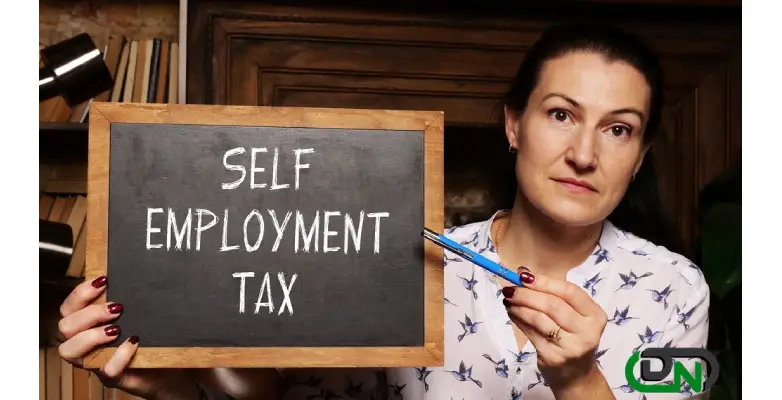Get ready to pay the self-employment tax if you launched your own business, freelance, or operate as an independent contractor. This is a tax that you were not required to pay when you were an employee. The self-employment tax or SECA tax (Self-Employment Contributions Act tax), is owed on your net self-employment income and is the self-employed person’s equivalent of the tax paid by employers and workers for Social Security and Medicare.
Table of Content
- 1 What is the Self-Employed Contributions Act (SECA) Tax?
- 2 Key Points of Self-Employed Contributions Act (SECA) Tax
- 3 Understanding the Self-Employed Contributions Act (SECA) Tax
- 4 Types of Self-Employed Contributions Act (SECA) Tax
- 5 Who Has to Pay SECA Tax?
- 6 How Much is the SECA Tax?
- 7 Paying the Self-Employed Contributions Act (SECA) Tax
- 8 Frequently Asked Questions
What is the Self-Employed Contributions Act (SECA) Tax?
Many people who start working for themselves for the first time-sole proprietors, independent contractors, and others-are taken aback by their tax bills at the end of the year when they realize they’re suddenly paying a lot more in taxes as an independent contractor than as an employee. This is due to the fact that they are responsible for covering all of their Social Security and Medicare costs.
When you work as an employee, you split that expense with your employer by paying a portion of the FICA tax. Your portion is routinely deducted from each paycheck, so it usually doesn’t appear on your tax return. If you work for yourself, though, you are liable for the entire sum.
The tax is split into two components:
- For Social Security, 12.4%. This portion of the tax is applicable to the first $147,000 in earnings for 2022. If you make more money than that (from self-employment or, if you have a job, from both your work and self-employment), the 12.4% of tax that supports Social Security is suspended for the year.
- For Medicare, 2.9%. The self-employment tax’s Medicare component continues to apply. You will always pay the 2.9 percent Medicare tax, regardless of your income. Please refer to IRS Tax Topic 554: The Self-Employment Tax for further details on this tax.
Key Points of Self-Employed Contributions Act (SECA) Tax
• The employer and employee components of your Social Security and Medicare tax, which total 15.3 percent on 92.35 percent of your net self-employment income, must be paid if you work for yourself.
• To compute your self-employment tax, use Schedule SE. In the “Other Taxes” section of Form 1040, provide the tax amount from Schedule SE.
• You are permitted to deduct half of your self-employment tax from your income when determining your self-employment income before applying the tax rate.
• You might be required to use Form 1040-ES to make anticipated quarterly tax payments if you owe $1,000 or more in federal taxes for the tax year.
Understanding the Self-Employed Contributions Act (SECA) Tax
- SECA taxes are calculated based on net earnings, which are calculated as the gross income from company activities less the business-related expenses.
- The basic rate of Social Security tax is 6.2% for employers and 6.2% for employees. Due to their status as both an employer and an employee, self-employed taxpayers who are subject to SECA are taxed at a rate of 12.4% (6.2% + 6.2%).
- However, the amount of income that is subject to this percentage has a cap. Only the first $147,000 of earnings is subject to the Social Security tax in 2022. The tax will be levied on the first $160,200 in income in 2023. Social Security tax is not levied on income over that amount.
- There is no exemption for Medicare taxation over a particular income level and the rate is 2.9% (1.45% for employers and 1.45% for employees). Therefore, the whole SECA tax is 15.3%.
- An additional SECA charge is applied to high-income earners. The Affordable Care Act (ACA) added an additional 0.9% Medicare tax for people with net incomes over $200,000 ($250,000 for married couples filing jointly).
Types of Self-Employed Contributions Act (SECA) Tax
The Social Security tax and the Medicare tax are the two halves of the SECA tax.
1. Social Security Tax
The Social Security portion of the SECA tax is 12.4% of your net self-employment income, or 92.35%. There is a cap on the yearly wage base, though. Only the first $147,000 in combined salaries, compensation, and self-employment income for the tax year 2022 is liable to the SECA tax’s Social Security portion. The yearly Social Security wage base limit is this sum, and it fluctuates each year. The wage base ceiling is increased to $160,200 in 2023.
Let’s understand it with an illustration, that your total income from self-employment, wages, and compensation in 2022 was $150,000. The SECA tax’s Social Security portion would only be due on the first $147,000. Your earnings of $3,000 would not be subject to the Social Security tax because that amount is beyond the wage base ceiling.
2. Medicare Tax
The Medicare portion of the SECA tax is 2.9% of your net self-employment income, or 92.35%. The Medicare tax does not have a maximum wage base, in contrast to the Social Security tax. Your total net profits from self-employment, wages, and compensation are all subject to tax.
3. Additional Medicare Tax
You must pay an additional 0.9% Medicare tax on your earnings, compensation, and self-employment income if your total income from self-employment and other sources is greater than a specific threshold for your filing status. The SECA tax does not include this charge.
The following are the income requirements for paying the Additional Medicare Tax:
| Filing Status | Income Threshold |
| Single | $200,000 |
| Married Filing Jointly | $250,000 |
| Married Filing Separately | $125,000 |
| Head of Household With Qualifying Person | $200,000 |
| Qualifying Widow(er) With Dependent Child | $200,000 |
Who Has to Pay SECA Tax?
Whether their company is set up as a sole proprietorship, LLC, or partnership, a self-employed person operating a business is required to pay self employment tax to the federal government. Self-employed taxpayers are not obliged to have a formally registered business in order to pay self-employment tax, but, if they list their company expenses on Schedule C as part of their personal tax return, they are required to do so. According to the IRS, a self-employed person is one who:
- As a solo entrepreneur or independent contractor, you operate a business or trade.
- In a partnership that manages a business or trade, you are a partner.
- Other than that, you are an independent contractor (including a side hustle).
How Much is the SECA Tax?
The SECA tax is typically 15.3% of your net self-employment income earnings, or 92.35%. However, it’s possible that part or all of your net earnings from self-employment income will be excluded from the 12.4% Social Security component of the SECA tax if you also receive other wages and compensation that are subject to the FICA tax.
You are permitted to deduct half of the SECA tax on your individual tax return if you must pay it. This deduction is intended to help you offset the additional “employer” Social Security and Medicare tax liabilities that they have on top of the “employee” part.
Paying the Self-Employed Contributions Act (SECA) Tax
Since self-employed persons are not subject to withholding tax, the IRS mandates that SECA tax be incorporated into quarterly estimated income tax payments. No SECA tax is owed and does not need to be reported on a tax return if self-employed net earnings are under $400 (or $108.28 from a church or other qualified church-controlled organization exempt from employer Social Security and Medicare taxes); however, if self-employed net earnings are above this minimum, SECA tax must be paid on the entire amount, including the amount below the minimum.
With self-employment tax, self-employed people are guaranteed to pay the same amount and enjoy the same benefits as salaried employees. Those who have just become self-employed might be shocked by the 15.3%. When all is said and done, though, tax deductions may allow you to avoid paying the whole amount of tax. Remember that you will have to handle a lot of the tax calculations on your own if you don’t have an employer. You may discover that expert tax assistance is helpful if the forms and requirements overwhelm or confuse you. So, our team of tax experts is available round the clock in order to help you as per your requirements or expectations.
Frequently Asked Questions
What is the SECA Tax Process?
Self-employed taxpayers must pay their SECA tax obligation themselves through quarterly estimated tax payments, payments made in conjunction with a request for an extension of time to file a tax return, and/or payments made when filing an income tax return, unlike employees who pay the FICA tax through their withholdings.
Your real SECA tax liability for the year is determined on Schedule SE, which is submitted with Form 1040. Despite the fact that you should typically estimate your SECA tax throughout the year as part of figuring out your quarterly tax due. Schedule SE makes use of data derived from Schedule C, on which you determine your net self-employment income.
Regular income taxes and SECA taxes are often bundled and paid simultaneously; you do not make separate payments for each. In spite of this, it is possible for you to owe SECA tax even when you haven’t paid any regular income taxes because the SECA tax must be paid in addition to regular income taxes. This is typically the situation when your net taxable income for the year is below the standard deduction amount for your filing status even though you have at least $400 in net self-employment earnings.
Is the SECA Tax Required to Be Paid?
You most likely need to pay the SECA tax if your net self-employment income in 2021 was $400 or more, and you did not earn more than $142,800 from other jobs or $108.28 as a church employee. However, you won’t typically be required to pay the SECA tax for a given year if your net self-employment earnings for that year are less than $400. In 2022, the SECA tax rates for self-employment income remain the same, but the $147,000 wage level is higher.
However, if you are a Christian Science practitioner, an ordained minister of a church, or a member of a religious order who has not taken a vow of poverty, you may be able to apply for an exemption from the SECA tax by utilizing Form 4631.
Are Self-Employed People Subject to Higher Taxes?
You are technically paying more in taxes. A self-employed person must pay a 15.3% Social Security and Medicare tax in addition to standard federal and state taxes. 12.4% of the total tax is allocated to Social Security, with 6.2% going to the employer and 6.2% to the employee. The 1.45% employer tax plus the 1.45% employee tax combine to make up the 2.9% Medicare tax component. Self-employment results in higher taxes because you must pay both your own amount and that of the employer. On the employer’s half of the tax, the IRS permits a tax deduction.
What is the Self-Employed Contributions Act (SECA) Tax Deduction?
Payment made by the employer is deductible as a business cost. In other words, the IRS permits self-employed people to deduct as a business expense from their taxable income the employer portion of the self-employment tax. This recognizes that a person manages a company’s operations rather than a “employer,” as would be the case for a person working for a company.
Self-employment taxes-which are the same as FICA taxes paid by an employer-include Social Security and Medicare taxes, it is vital to emphasize. One-half of the SECA tax that is deducted by a taxpayer is only deducted when determining that taxpayer’s income tax. It neither lowers the self-employment tax itself nor the net earnings from self-employment.
How is the SECA Tax Criticized?
Some taxpayers have engaged in conflict with the IRS over their contention that they ought to be granted the option to forego receiving Social Security benefits and, as a result, receive a refund of the lifetime Social Security taxes they have already paid. These tax payers obviously have no interest in paying the SECA tax.
Due to the Social Security salary base restriction, the SECA tax is also criticized for being regressive, with a higher effective rate for individuals making less than $142,800 than for those making more than that amount. The same justification holds true for people who fall on either side of the $147,000 cutoff in 2022.




